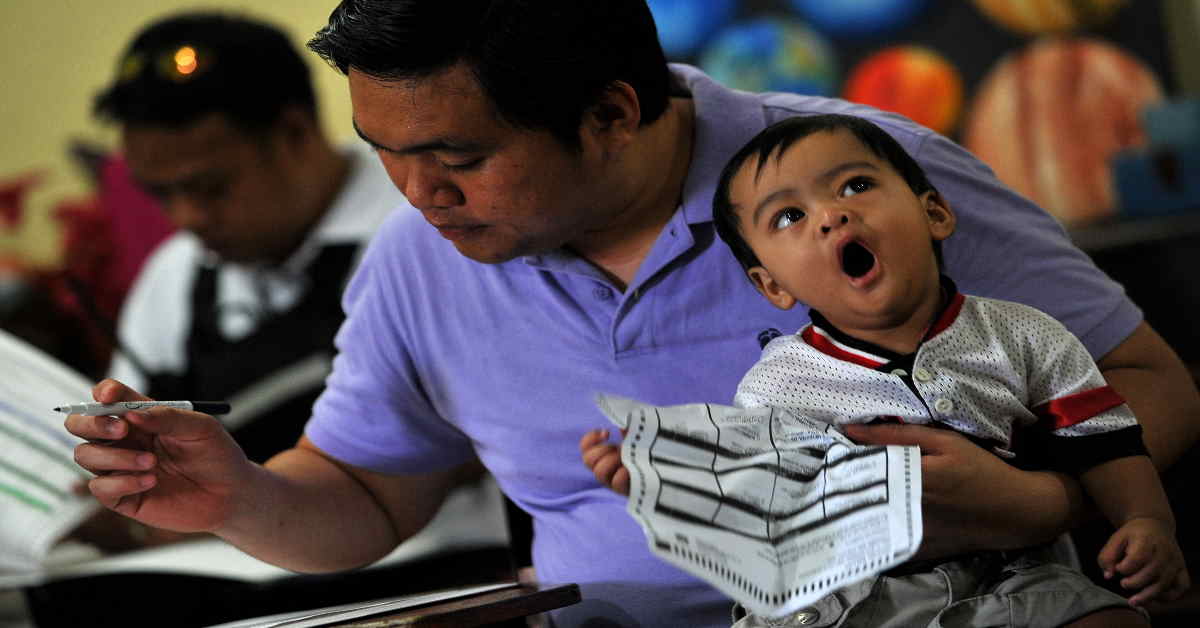It is a universal assumption that mothers are the ones who take care of children, but more fathers are now taking time off to look after their new-born babies and their partners, soon after childbirth. Countries worldwide are setting benchmarks for policies to support men’s involvement in parenting with a focus on paternity leave.
According to the World Economic Forum (WEF), about 90 out of 138 countries offer statutory paid paternity leave, citing a study by Promundo, a United States (US) based organisation promoting gender equality. Sweden was the first country to introduce gender-neutral parental leave, with non-transferable leave reserved exclusively for fathers. ASEAN countries are also introducing policies to allow fathers to take parental responsibility.
ASEAN fathers
Based on a 2019 article, ‘Expanding paternity leave in Southeast Asia,’ by Marian Baird, Elizabeth Hill and Lisa Gulesserian on the East Asia Forum, paternity leave policies in ASEAN countries vary according to duration, wage replacement rates, funding sources and eligibility.
The Philippines is a pacesetter in the region as it first introduced national paternity leave legislation in 1996. The law provides married fathers employed in both, the public and private sectors with seven days of fully paid leave for up to four children. Recently, a change to the Maternity Leave Act allows any female worker entitled to maternity leave to transfer up to seven of her 105 days of paid leave to the child’s father, regardless of their marital status. This new policy means men are now eligible for up to 14 days of paid leave.
Fathers in Indonesia working in the public sector are eligible for paid paternity leave for one month, while those in the private sector are eligible for two days of paid leave.
Myanmar and Thailand provide 15 days of paternity leave based on eligibility. In Myanmar, the leave is funded by the country’s social security board scheme, therefore, fathers are required to have made at least six months of social security contributions in the 12 months before the child’s birth.
In Vietnam, mandatory, state-sponsored paternity leave funded by social insurance came into effect in 2016. Employed, married fathers can get paid leave of five to 14 days, depending on the type of birth, the number of children born and if the child is adopted or not.
Singapore also provides two weeks paternity leave for fathers of children who are citizens. Employed mothers can share their 16-week maternity leave with their husbands for up to an additional four weeks. In Singapore, parental leave is fully funded by the government.
In Malaysia, fathers working in the public sector are entitled to seven days of paternity leave. In June 2019, the Human Resources Ministry (HRM) proposed to introduce three-day paternity leave for fathers in the private sector, to be funded by the employer. HRM deputy minister, Mahfouz Omar said the Cabinet has yet to approve the proposal. If approved, the proposal will be included in the Employment Act 1955. The Women’s Aid Organisation (WAO), a local non-governmental organisation (NGO), is proposing for at least seven days of paternity leave as it is crucial in promoting shared responsibility among parents.
“Paternity leave will enable fathers to play an active role during childbirth and to adjust to the monumental life changes that come with being a father. Various studies show that children with involved fathers have better social, emotional and cognitive development and perform better in school,” said Sumatra Visvanathan, WAO executive director.
However, the Malaysian Employers Federation (MEF) countered that the HRM’s proposal will cost companies US$12.5 million a day. “The payment should be from SOCSO or Employment Insurance System where both, employers and employees contribute to SOCSO and EIS,” said MEF executive director Shamsuddin Bardan.
The Society for Equality, Respect and Trust for All Sabah (Serata) said it was disheartened that the MEF would prioritise profit over the welfare of children and families of employees. “While Serata understands the importance of profit for businesses, … such a belief that paternity leave is not necessary is indicative of how deeply-rooted stereotypes are in Malaysia,” said Serata founder and chairperson Sabrina Melisa Aripen.
Father-child bonding
Paternity leave benefits fathers and children, as it encourages father-child bonding, which is essential for a child’s health. Studies have shown that children with involved fathers have better social, emotional and cognitive development, and perform better in school. Mothers also benefit from paternity leave, through increased support and additional time and space for them to heal physically and emotionally after childbirth. Having help in childcare reduces stress in mothers which allows for a smoother transition back to work. With more fathers involved in household chores and child-rearing, there will be a shift in gender norms, and the possible reduction in gender stereotypes.
It makes good business sense for companies that support fathers by allowing them to take paternal leave as it promotes staff loyalty among fathers; making them potentially stay longer with the company. Paternity leave also supports women’s attachment to the workforce, whose increased participation will benefit the overall economy.
Paid paternity leave is a step in the right direction to encourage fathers’ involvement in raising their children. The obstacles of cost and persistent gender stereotyping need to be overcome because when men are able to take paid paternity leave, everyone – including women, children and the community at large – enjoy the benefits.
Related articles:
